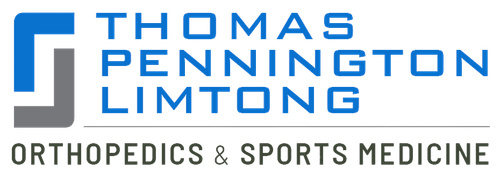Sports Medicine
 Common knee injuries occurring due to sports activities may include anterior cruciate ligament (ACL) tear, cartilage damage, and meniscal tear. Surgical intervention may be necessary to address severe knee injuries, which can be performed using open surgical or minimally invasive techniques.
Common knee injuries occurring due to sports activities may include anterior cruciate ligament (ACL) tear, cartilage damage, and meniscal tear. Surgical intervention may be necessary to address severe knee injuries, which can be performed using open surgical or minimally invasive techniques.
Board certified orthopedic surgeons Dr. Steven Thomas and Dr. Gregory Bigler provide sports medicine for knee injuries to patients in Las Vegas, Nevada, and surrounding communities that are in the southeast part of this state around this large American city in the desert.
ACL Tear
Non-surgical treatment may be recommended if the overall stability of the knee is still intact. This may include rest, ice, compression, and elevation (RICE protocol). To improve knee strength and motion, physical therapy may be used. Knee brace may be required to help immobilize the knee for a certain period.
Young athletes may require surgery to safely return to sports following a serious ACL tear. The surgeon may involve an ACL reconstruction to tighten the knee and restore its stability. Arthroscopy is commonly used to perform surgery in a less invasive way with small incisions. The torn ligament will be replaced with a tissue graft that could come from the knee or hamstring muscle.
PCL Tear
Posterior cruciate ligament (PCL) is located at the back of the knee, and connects the femur bone to the tibia. PCL injuries are more complex and rare, and often occur along with bone bruises, cartilage injuries and ligament injuries. Both non-surgical and surgical treatment options may be applied. Physical therapy, knee brace and crutches may be advised as part of the treatment.
If the knee is dislocated and several ligaments, including the PCL are torn, a surgery may be required. This will involve reconstruction of the torn ligament using a tissue graft taken from another body part or from another donor. An arthroscope can be used to perform the surgery using small incisions.
Meniscus Tear
This is one of the most common knee injuries for athletes involved in contact sports. A sudden twist or bend in the knee can cause a meniscus tear. The treatment will depend on the location, size and type of the tear as well as the patient’s age and activity level. Non-surgical treatment may be used if the tear is small and the meniscus damage is superficial.
Surgery may be required if the symptoms do not resolve with the non-surgical approaches. Knee arthroscopy is generally used to repair meniscal tears. The options will include meniscus removal, repair and replacement. Meniscus removal will involve surgical scissors or shavers to remove the torn meniscus. In case of arthroscopic repair, the torn meniscus will be pinned or sutured depending on the extent of tear.
Cartilage Damage
Non-surgical treatment for knee cartilage damage may include pain medications, brace or splint, and physical therapy. However, a severe case of cartilage damage will require surgery. Some of the commonly performed surgeries for this condition include arthroscopic lavage and debridement, marrow stimulation, mosaicplasty, allograft osteochondral transplantation and autologous chondrocyte implantation.
Board certified orthopedic surgeons at the Thomas & Bigler Knee & Shoulder Institute receive patients from Las Vegas, Nevada, and nearby areas for knee injury treatments and other procedures.
If you would like to schedule an appointment or learn more about the Knee and Shoulder Institute procedures & treatments performed by Las Vegas, Nevada board certified surgeons Steven C. Thomas, MD and Gregory T. Bigler, MD. call (702) 933-9393; Physical Therapy (702) 933-9393.
